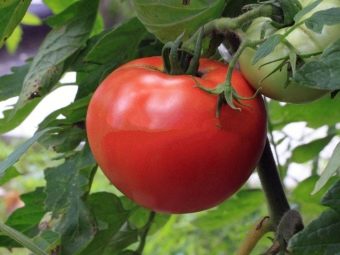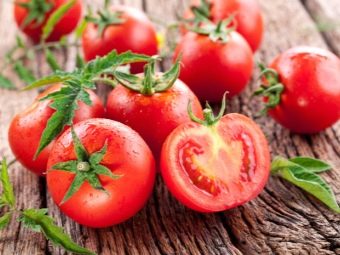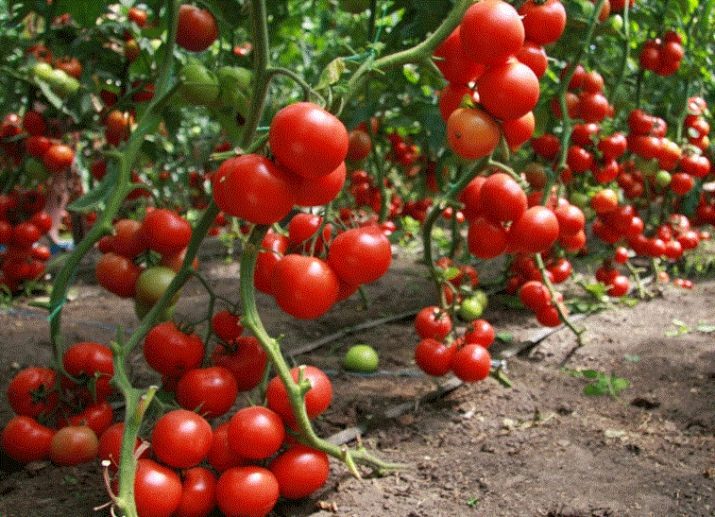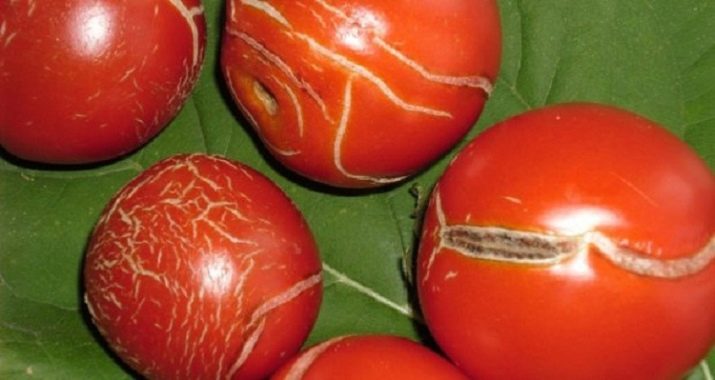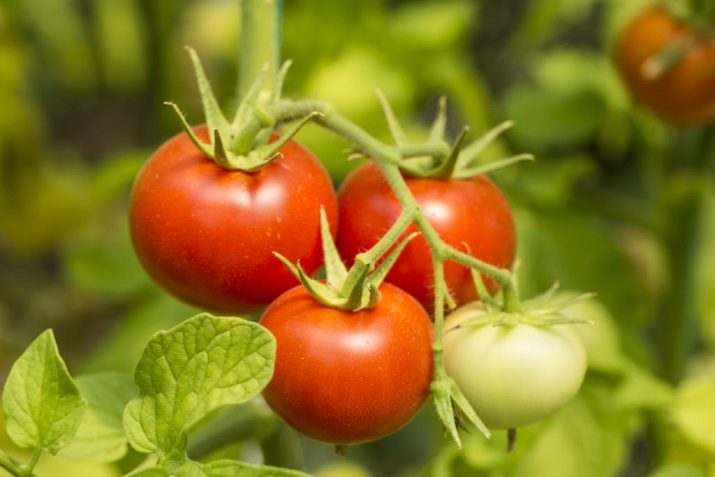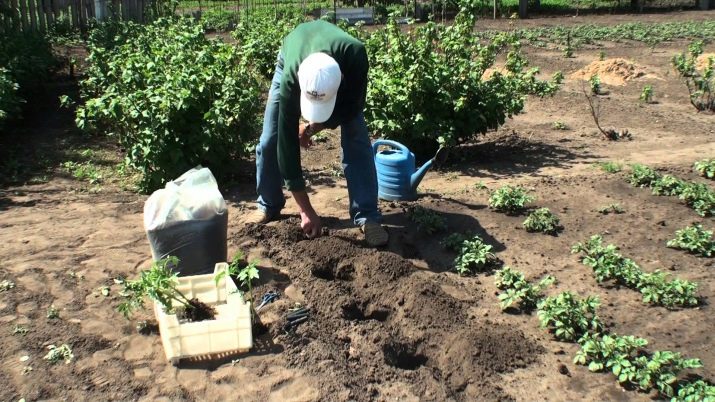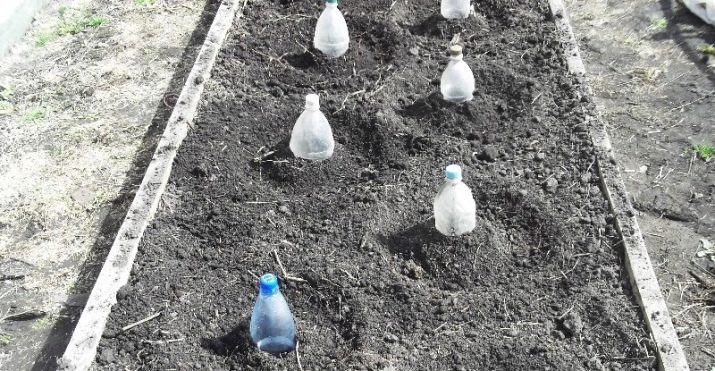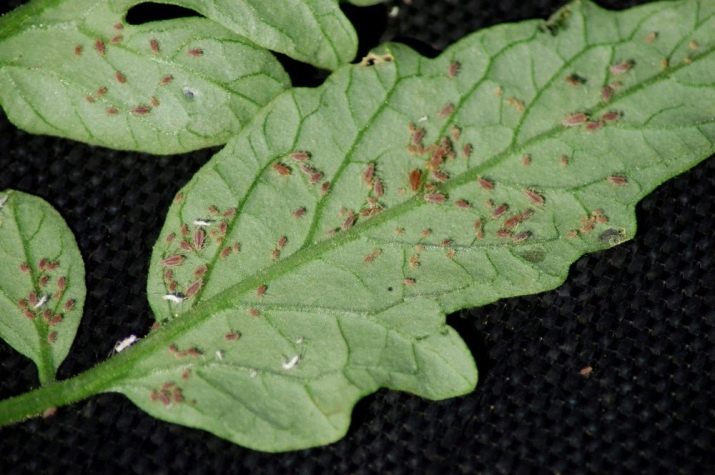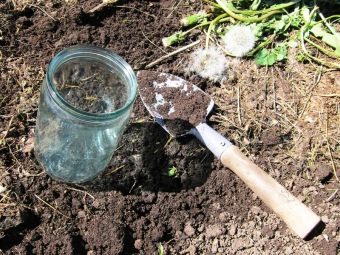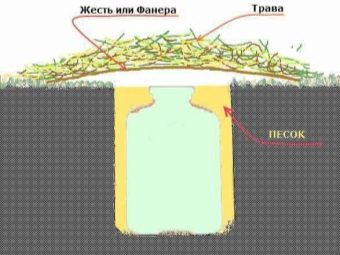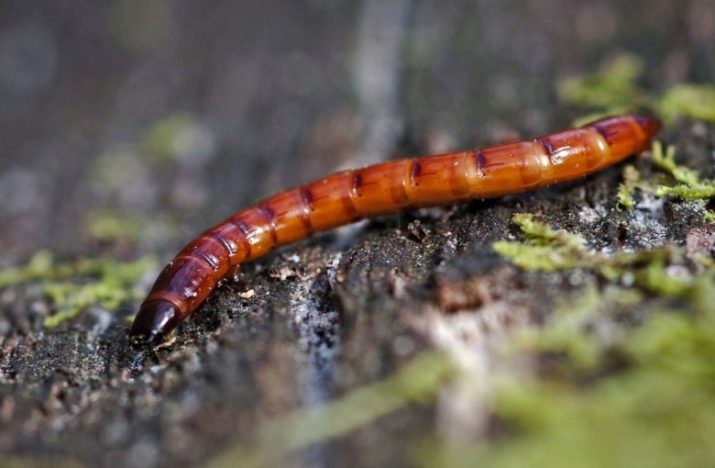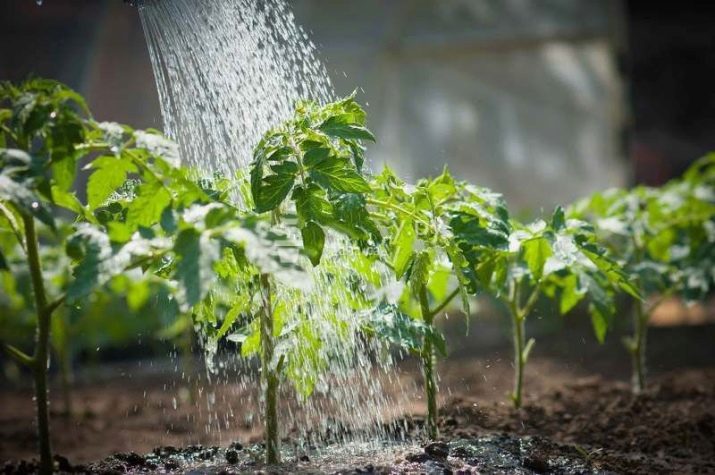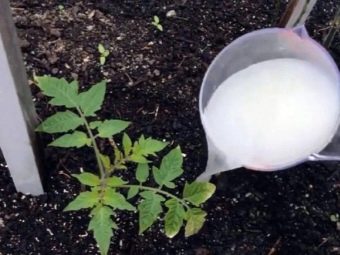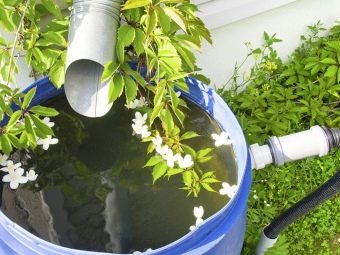Tomato "Gina": characteristics and tips on agricultural technology
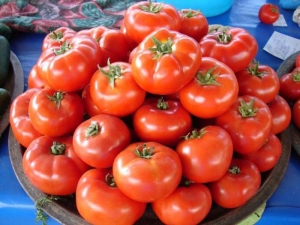
The variety of tomatoes "Gina" was developed relatively recently by experts from Europe. Due to the good yield, taste of fruits and ease of cultivation, this type of tomato has already received great popularity. Detailed characteristics of the variety and tips on farming will be discussed in this article.
Variety description
The variety "Gina" does not apply to the early ones: the ripening of fruits begins 120 days after the transplanting in open ground. The height of the bush is small, as is the number of leaves of the plant. Usually this species reaches a height of not more than sixty centimeters.
The plant has three powerful stalks that do not need a garter. You can also do without pinching and forming a bush. The plant is resistant to many diseases and is mainly subject to attacks by pests.
Tomatoes "Gina" can be grown both in open ground and in greenhouses. It is recommended to plant no more than four bushes per square meter of soil. The variety belongs to the heat-loving tomatoes, so in the southern cities of the country the plant can be bred without the use of seedlings.
The fruits of the plant are quite large, have the shape of a slightly flattened circle. The mass of one tomato can reach 0.3 kilograms. The fruits have a rather intense red color. The peel of tomatoes is quite hard and thick.
As for the taste characteristics, these tomatoes are sweet varieties. However, there is a slight sour taste. The soft part of the fruit has a rich smell and contains a lot of juice.
Yield
The variety of tomatoes "Gina" has a very good yield. With one square meter of plantings you can get ten kilograms of tomatoes. The process of formation and ripening of fruits is quite long.
Tomatoes of this variety can be grown for personal use or for sale. Fruits tolerate transportation and can be stored for a long time, without losing taste and appearance. Such a product can be consumed in its natural form, as one of the components of various dishes and canned for the winter.
Advantages and disadvantages
Each tomato variety has its pros and cons. Tomatoes "Gina" are no exception. Among the advantages of this variety are the following:
- good yield;
- the plant is not demanding to care;
- in regions with a warm climate, tomatoes can be planted in a non-seedling manner;
- Tomatoes of this variety are rather large and dense, so they can be grown for further sale;
- differs in long fructification;
- has excellent taste characteristics;
- resistance to many diseases;
- Tomatoes are stored for a long time without losing their taste, original appearance and integrity.
According to reviews of gardeners, Gina tomatoes for the most part have only pluses. However, there are some disadvantages of this class:
- the plant is not resistant to many parasites;
- does not tolerate low temperatures and sudden temperature changes;
- on the surface of overripe tomatoes cracks.
What is the difference from a hybrid?
Hybrid "Gina TST" was bred by Russian experts and has a number of differences from the original variety. First of all, it is the height of the bush, which can reach 65 centimeters. The bush also has three main stems, but is very branchy. The main differences between the “Gina TST” variety and the “Gina” tomatoes are as follows.
- The ripening time, which in this case will be 105 days from the date of transplanting.
- Hybrid variety more demanding in the care. It is recommended to tie it up, otherwise the bush may fall apart. It is also necessary to cut the leaves from the bottom of the stems.
- Fruits of this variety can reach 350 grams in weight, so these tomatoes are not very convenient to use for salting.
- With proper plant care, the yield of this variety can be very high: more than 12 kilograms of tomatoes per square meter.
How to plant?
Planting methods and characteristics of cultivation largely depend on the climate in the region. There are two ways of planting plants: seedless and seedling. Since the variety is rather unpretentious, there are no particular difficulties with growing tomatoes even among inexperienced gardeners.
Sowing seeds for seedlings
Growing tomatoes with a preliminary dilution of seedlings is suitable for regions with colder climates. Seeds are first grown in a greenhouse, and after that the seedlings are transferred to open ground. Sowing seeds should be carried out at the end of March. Before planting, potassium permanganate solution is introduced into the soil.
At the stage of growing seedlings, it is necessary to monitor the temperature, as this variety of tomatoes needs heat. When the first shoots appear, they must be pulled back, removing poorly developing seedlings.
If the seeds were planted in the boxes with the ground, then when the seedlings get a little stronger, the container with the shoots must be periodically taken out of the greenhouse to the street. Thus, the plant is better prepared for transplanting in open ground.
Transplantation in open ground
Seedlings transplanted in the first part of June. The age of the plant at this point will be about fifty days. It is important to take into account the temperature of the soil in which the seedlings will be planted. The soil should be heated to eighteen degrees.
It is not necessary to plant seedlings with a high frequency: optimally leave no more than four bushes per square meter. If the outside air temperature at the time of planting the plant is kept at a level below seventeen degrees, then the seedlings must be covered.
Seedless way
Planting Gina tomatoes without preliminary growing of seedlings is possible only in regions with a warm climate. In this case, the seeds are planted immediately in open ground. Pre-seed should be held in a special composition with an antiseptic or in a solution of potassium permanganate.
The most suitable time for sowing seeds is the end of spring. Seed material is placed in pre-prepared shallow furrows. Phosphate-potassium fertilizers are recommended to be introduced into the soil beforehand. Before planting the seed furrow must be well moistened.
When the seed will be placed in the soil, the grooves are covered with earth and lightly crushed. The growth of bushes can be stimulated by covering the plantings with a covering material. When the first strong sprouts appear, the shelter can be removed, and the soil must be regularly loosened and fertilized.
Diseases and pests
As for diseases, the Gina variety is notable for its excellent resistance to them. Fungal lesions do not threaten the tomatoes, provided that they are properly cared for. Another factor that can trigger fungal diseases is the cold climate in the region and, as a result, unfavorable growing conditions.
Aphid
Insect pests are considered more dangerous for tomatoes of this variety. Bushes are quite often attacked by aphids. And aphid can damage the plant at any stage of its growth. Affected yellowed leaves will indicate a pest attack. If the plant louse attacked the plant during fruiting, the tomatoes will quickly deteriorate.
In addition, insects can provoke various diseases of the bushes of a viral nature. The greatest activity of the pest begins in June.
In the fight against aphids will help store tools, as well as traditional methods that are less dangerous for tomatoes than chemicals.
Medvedka
Medvedka ordinary lives inside the soil and destroys the root system of plants.Especially often the insect attacks the seedlings of Gin tomatoes. It would be more correct in this case not to exterminate the already existing pest population, but to prevent its attack on the plants in advance.
Ways to protect tomatoes from a bear can be divided into two types: mechanical and chemical. The first method is the safest for the plant itself and at the stage of planting tomatoes in the open ground the organization of root protection is organized. For this purpose, you can use scraps of large plastic bottles or any other cylindrical material.
In this case, the roots and the part of the bush, which is above the ground, will be reliably protected from pests. The cylinder should go into the soil to a depth of about twenty centimeters. Six centimeters of the cut bottle should remain above the ground.
The most favorite habitat of the Medvedok is the greenhouse. This is due to favorable conditions for its habitat, which, in the first place, are due to warm earth. When growing seedlings in a greenhouse, you can organize traps for pests.
To create traps, glass jars of no more than one liter and wooden boards will be required. Pour some water into the jar and place it in the ground. In this case, the neck of the can should not be flush with the surface of the soil, but go a little deeper, about ten millimeters. Top trap covered with a board.
Colorado beetle
Another pest that often infects tomatoes is the Colorado potato beetle. The insect appears on the ground when the soil warms to a temperature of 23 degrees. Besides the fact that the beetle actively absorbs the leaves of the shrub, it will also multiply rapidly. The larvae devour the plant even more actively than the adults and are able to destroy one bush in less than three weeks.
The fight against such insects is complicated by their ability to adapt to different climatic conditions and the effects of chemicals. To protect the tomatoes from such a pest, a single treatment of plants will not help. In this case, it is necessary to take control measures regularly.
It is best to combine the effects of chemical agents and mechanical methods of removing the beetle. Tomatoes must be sprayed with chemicals regularly throughout the entire period of plant growth and development. However, beetles are required to be collected manually and destroyed.
Wireworm
The wireworms are clicker larvae. In this case, the beetles themselves do not pose a danger to the tomato, unlike the larvae. The pest eats root system of bushes, and also the ripened tomatoes. In the fight against wireworms, you must use an integrated approach, using several effective methods at once.
To reduce the likelihood of the emergence of click-beetle larvae can be at the stage of planting seedlings. To do this, it is required to put husks from onions in the pits. Instead of husk, you can use dry mustard powder.
Another method involves reducing the acidity of the soil. To do this, ground ash is introduced into the soil. To destroy the wireworm can be organized in the garden traps. This will require banks or other similar capacity of small volume. The container must be placed in the ground without burying or closing it.
In the jar you need to put potato leaves, which are pre-tied with a rope, so that they are easier to remove. The area of land where the traps are located should be humidified as often as possible. After a couple of days, the larvae should appear on the potato leaves, which must be reached and destroyed.
In addition to traps and preventive measures that are gentle on tomatoes, chemicals can be used. Special tools can be purchased at any store of garden products.
Care rules
This variety of tomatoes is undemanding in the care. However, for better growth and development of the bushes it is necessary to carry out regular watering and fertilizing.Particular attention should be paid to the treatment of plants from pests, as they represent the greatest danger for this variety of tomatoes. Peculiarities of care also depend on the climatic conditions in the region in which tomatoes are grown.
Watering and tillage
Like other types of tomatoes, the Gina variety must be constantly watered. At the flowering stage, the soil should be moistened once every three days. When fruits begin to appear on the bushes, it is necessary to water more often - in one day. A big role is played by weather conditions.
During the rainy season, the bushes do not need to be watered, and in dry weather soil moisture should be more frequent. When the air temperature for a long time stays at around thirty degrees, you need to water the plants daily.
In addition to watering, the soil itself also needs care. It is required to regularly remove weeds, as well as loosen the ground.
Fertilizer
Fertilizing tomatoes is necessary, first of all, to get a good harvest. Without top dressing, the bushes will develop and bear fruit not so actively. It is recommended to use the following fertilization scheme:
- the first time feeding is carried out after fourteen days after the tomatoes have been planted in open ground;
- ten days after the first feeding, you need to repeat the procedure again;
- the third time fertilizers are introduced fourteen days after the previous feeding;
- the last dressing is carried out three weeks after the third fertilization of the soil.
Both organic and inorganic fertilizers can be used as feed.
Before each feeding the soil must be moistened. For this purpose it is best to use real or rain water.
Storage
The fruits of this variety are very easy to transport and store. Knowing some of the tricks of storing “Gina” tomatoes, you can keep them fresh for a period of three months. For example, you can put the tomatoes in a clean glass container and close the lid tightly. Capacity with tomatoes must be stored in a cool place, then the fruit will retain its integrity and freshness for a long time.
Review of tomato "Gin", see the following video.



